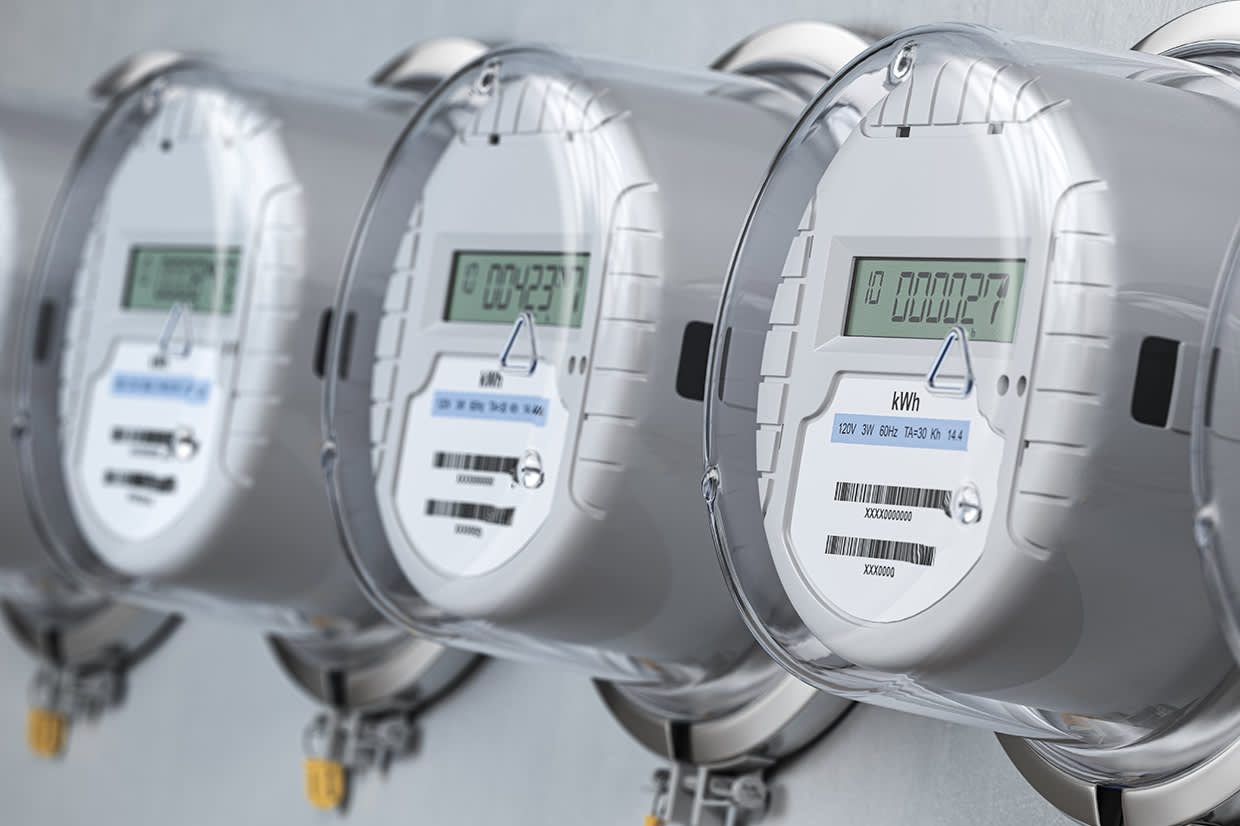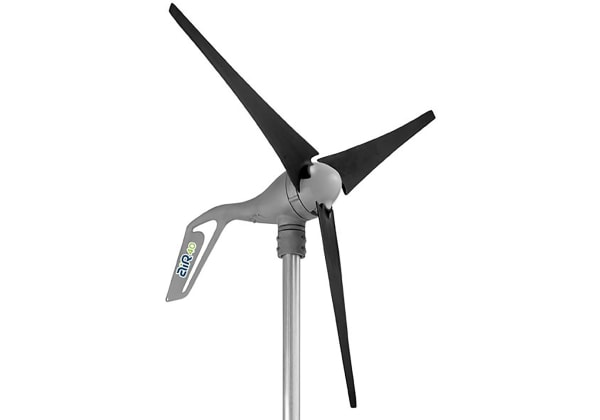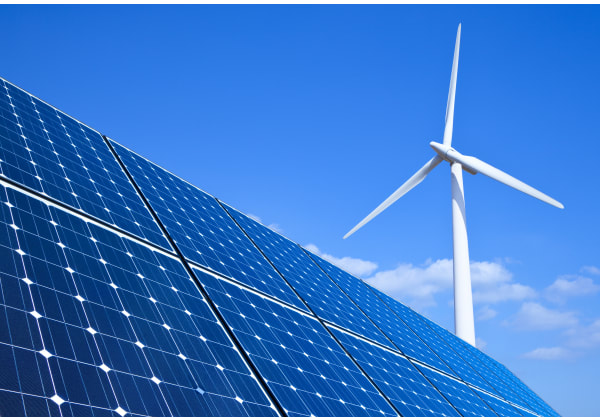- Published 27 Aug 2024
- Last Modified 27 Aug 2024
- 6 min
The Importance of Energy Meters for Effective Energy Monitoring
This article will explain the different energy meters available for industrial applications so you can find the right one for your needs.

Reviewed by Peter Kendall, Technical Interaction Engineer (June, 2024)
Energy management is essential for maintaining efficient and cost-effective operations in any facility. With rising energy costs and an increasing emphasis on sustainability, understanding and managing energy consumption is more critical than ever. This guide explores various types of energy meters, including traditional power meters, digital meters, and multi-rate watt hour meters, and highlights the benefits of an integrated energy monitoring system. We will also discuss how these tools can help maintenance departments optimise energy usage and improve operational efficiency.
Types of Energy Meters
Understanding the different types of energy meters available is crucial for effective energy management. Each type offers unique benefits and features suited to specific needs and applications. Following are some types of energy meters utilised in the market today:
- Power Meters: Power meters measure the electrical power used by a device or system. They can be stand-alone units or integrated into larger systems to provide real-time data on power usage. Power meters are essential for understanding peak demand and identifying opportunities to reduce energy consumption.
- Digital Meters: Digital meters represent the evolution from traditional analogue meters. They offer more precise readings and often include features like remote reading, data storage, and enhanced accuracy. Digital meters can provide instantaneous data on voltage, current, and power consumption.
- Multi-Rate Watt Hour Meters: Multi-rate watt hour meters, also known as time-of-use meters, measure electricity consumption at different times of the day. They help users take advantage of varying energy rates, optimising usage during off-peak hours to reduce costs.
- Smart Energy Monitors: Smart energy monitors measure energy consumption and provide real-time data and analytics through connected platforms. They integrate with home automation systems and mobile apps, allowing users to monitor and control energy usage remotely.
Benefits of Energy Monitoring Systems
Implementing an energy monitoring system that integrates various types of energy meters offers numerous benefits. These systems provide detailed insights that can drive significant improvements in energy management. Following are some important benefits derived from using energy meters:
- Cost Savings: Detailed data on energy consumption helps identify areas where energy usage can be reduced, leading to significant cost savings. For example, understanding peak usage times can help shift energy consumption to off-peak periods.
- Improved Efficiency: Energy monitoring systems ensure that energy is used efficiently and waste is minimised. This results in improved operational efficiency and reduced operational costs.
- Enhanced Maintenance: Energy meters help in proactive maintenance by identifying equipment that consumes more energy than usual. Early detection can prevent costly repairs and downtime.
- Sustainability: Monitoring energy usage helps organisations meet their sustainability goals by reducing their carbon footprint. Optimising energy consumption contributes to environmental conservation efforts.
- Data-Driven Decisions: The detailed insights provided by energy monitoring systems allow for data-driven decision-making. Maintenance teams can plan maintenance activities and optimise energy use based on this data.
Applications of Energy Meters
Energy meters have a wide range of applications across various sectors. Understanding these applications can help in selecting the right type of meter and implementing effective energy management strategies. Following are some of the most common applications for energy meters:
- Residential: In residential settings, energy meters help homeowners track their electricity usage and manage their energy costs. Smart meters can provide real-time data, helping residents identify high-consumption appliances.
- Commercial: In commercial buildings, energy meters monitor the energy consumption of different areas and systems, such as lighting, HVAC, and office equipment. This data can be used to optimise energy use and reduce costs.
- Industrial: Industrial facilities often have complex energy needs. Energy meters in these settings help monitor and manage energy use, ensuring that machinery operates efficiently.
- Utilities: Utility companies use energy meters to measure the electricity delivered to consumers. Advanced metering infrastructure (AMI) allows for remote reading and data analysis.
- Renewable Energy: In renewable energy installations, such as solar or wind farms, energy meters measure the production and distribution of energy. This data is crucial for managing the supply and ensuring efficiency.
- Public Sector: Government buildings, schools, and hospitals benefit from energy meters by monitoring energy usage and implementing measures to reduce consumption and costs.

Implementing an Energy Monitoring System
Implementing an energy monitoring system involves several steps, from assessing current energy usage to continuous optimisation. Proper implementation ensures that the system delivers maximum benefits. Here is how an energy monitoring system can be implemented:
- Assess Current Energy Usage: Before implementing an energy monitoring system, it is crucial to understand the current energy usage patterns. This involves gathering data from existing meters and identifying key areas of consumption.
- Select Appropriate Meters and Monitors: Based on the assessment, select the types of meters that best fit your needs. For instance, if detailed consumption data is essential, digital meters or power meters would be ideal.
- Integrate with Existing Systems: Ensure that the new meters and monitoring systems can be integrated with existing building management systems (BMS) or other relevant infrastructure. Integration facilitates seamless data collection and analysis.
- Set Up Data Collection and Analysis: Establish a robust system for data collection and analysis. This could involve setting up a centralised software platform that consolidates data from all meters and provides actionable insights.
- Train Staff: It is essential to train maintenance staff on how to use the new system effectively. This includes understanding how to read the data, interpret the insights, and take appropriate actions.
- Monitor and Optimise: Once the system is in place, continuously monitor the data and look for opportunities to optimise energy usage further. Regular audits and reviews can help in making incremental improvements.
Energy meters, including power meters, digital meters, and multi-rate watt hour meters, are essential tools for any maintenance department looking to optimise energy usage and reduce costs. By implementing an energy monitoring system, facilities can achieve significant cost savings, improve operational efficiency, and contribute to sustainability goals. Maintenance teams, armed with detailed insights from these systems, can proactively manage energy resources, ensuring a more efficient and cost-effective operation.
Understanding and leveraging the capabilities of various energy meters and monitoring systems allow maintenance departments to make informed decisions that lead to better energy management and enhanced overall performance. Investing in these technologies is a strategic move towards achieving both financial and environmental benefits.


